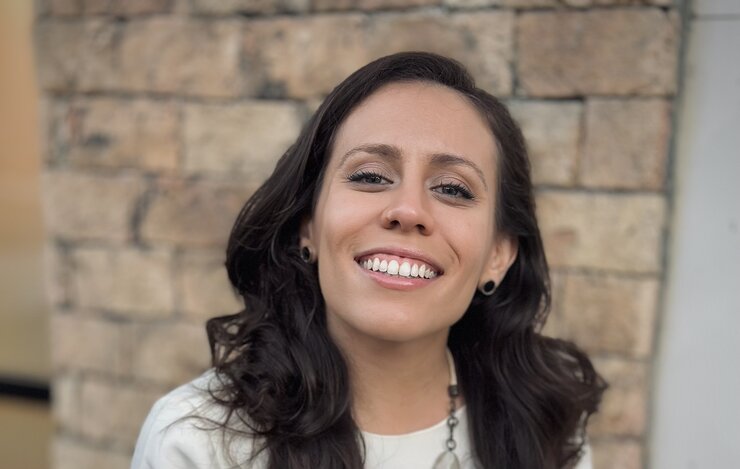
«I’m not asking whether you want to live to be one hundred – I’m asking whether you can even imagine living that long.»
With this seemingly simple, yet deeply probing question, Brazilian director and performer Jéssica Teixeira opens her solo performance «Monga». Awarded Brazil’s most prestigious theatre prize for Best Direction in 2024, «Monga» is a powerful reflection on body images, imposed identities, memory, and visibility.
Inspired by the tragic story of Julia Pastrana, an Indigenous Mexican artist who was exhibited in 19th-century European freak shows, Teixeira creates a radically contemporary and highly personal performance. In it, she confronts colonial entanglements as well as current forms of discrimination, ableism, fetishization, and artistic self-empowerment.
In conversation with curator Lea Loeb, Jéssica Teixeira speaks about historical and sexualized violence, performative autonomy, the strength of nakedness on stage – and about how art can contribute to imagining new forms of living together.
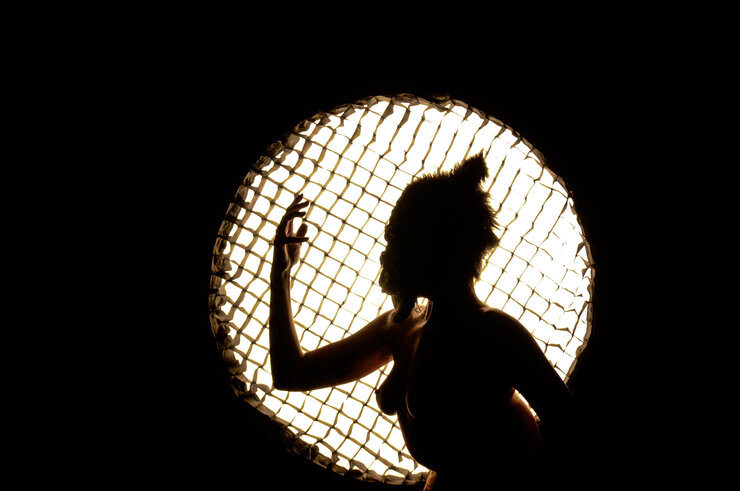
Jéssica, thank you so much for taking the time to speak with me over Zoom today. We met a little over a year ago in São Paulo, where I attended a rehearsal presentation of your piece «Monga» at the Farofa Festival. The piece premiered in September 2024 and has since enjoyed great success in Brazil. Now, you're beginning your first European tour with «Monga», and we’re thrilled to be presenting it this August as part of the Zürcher Theater Spektakel.
Your piece explores the life of the historical figure Julia Pastrana, a Mexican artist who lived in the 19th century. Born with hypertrichosis – a genetic condition causing excessive hair growth – she was forced to perform in circuses and so-called freak shows across Europe due to her physical «differences». Her body was put on display throughout her life, and she died young. A tragic story.
What drew you to this historical figure, and how did she inspire the creation of «Monga»?
Thank you for this interview, Lea. As a kid, I used to see a performance called «Monga» – an act where a woman in a cage transforms into a gorilla. It was a classic horror performance. It scared me deeply but it somehow attracted me as well. «Monga» was performed a lot in circuses all over Brazil as a classic act everybody knew. It used to be performed by a normatively beautiful woman.
It was only years later that I found out the circus act I had seen as a child was based on Julia Pastrana’s story. That realisation stayed with me. It allowed me to see the figure behind it from multiple perspectives. I didn’t want to simply recreate that old horror act. What interested me more was the psychological horror – something invisible, something internal. I didn’t want to reproduce the «classic act», but rather reflect on what it means for bodies like ours, not normative bodies, to be put on display.
It reflects something deeper. It’s not just about recreating the act, but about exploring a certain horror tied to my own body. I didn’t want to replicate a classic freak show. Instead, I wanted to tap into the psychological horror – the kind that’s invisible. For me, it’s about confronting the invisible parts of Julia Pastrana’s story. For example the part about who consumed this attraction and for what reasons. And also about confronting what that story means to people like me today. My work becomes a way to embody that horror without perpetuating it.
What stands out to me in Julia Pastrana’s case is not only the exotification of bodies perceived as «other» or non-normative, but also the colonial dimension of her exploitation. As a Brazilian artist, how does it feel to now bring this piece to Europe?
As a Latin American artist, I feel honoured to travel to Europe to present my work. I studied and worked hard to get where I am now, an artist with international recognition and the possibility to present my work abroad. But I also feel conflicted, because Europe is where Julia’s body was most exploited. It’s a place that once displayed her, and still fetishizes bodies like mine. My body and my story become part of contemporary art. Sometimes I ask myself: Why are our bodies still considered entertaining? Why are they consumed this way? I don’t always have the answer. So I guess I feel both honoured and burdened at the same time.
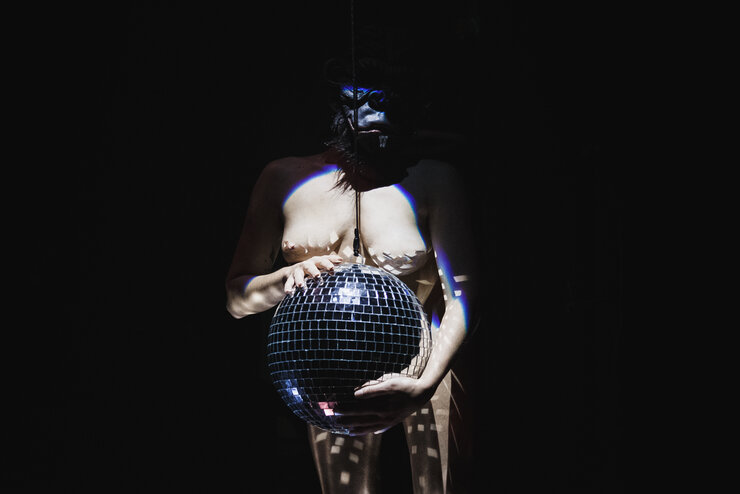
In «Monga», you speak about the fear many people feel when confronted with bodies that differ from the norm. You ask where this fear originates. In your view, where does it come from?
Historically, bodies like mine were killed – often as infants. That’s why I never really imagined growing old. Doctors and civil servants told me and my family that I wouldn’t study, wouldn’t work. But now, at 32, I can imagine living to 100 – because I’m an artist. And because imagination is vital. We all need to project ourselves into the future. We need to envision a life with dignity. Our ancestry and our memory have often been silenced or erased. My fear is tied to this erasure. People fear bodies like mine because they don’t know us. We don’t appear in the history books or in any other story of humanity. Our memory is tied to our bodies. Our trauma. Our imagination. It’s very difficult to create new role models. We don’t exist in the past, but we want to exist in the future.
Building a career as an artist with a marginalised or disabled body is surely anything but easy. In Switzerland and across Europe, artists with disabilities continue to face numerous structural and societal barriers. What is the situation like in Brazil?
In Brazil, accessibility has become a field of research and knowledge. It takes time, budget, and planning. But we are making real progress. Accessibility doesn’t only concern people with disabilities. In my research, I see it as a two-way street. It’s not only about sign language interpretation for deaf audiences or audio description for the blind. It’s also about reinventing ourselves – reimagining communication.
I grew up reading theatre scripts. And those stage directions – those detailed descriptions – were a kind of accessibility. They helped me imagine every scene, every gesture. So in that sense, accessibility has always been part of the language of theatre.
For me, accessibility becomes an act of reinvention. It’s not just about «providing» something to someone. It’s about rethinking the way we communicate and coexist. Reducing accessibility to a mere charitable gesture – to simply «giving access» – misses the point. People with disabilities need accessibility, yes, but so do people without disabilities. We all need to rethink how we live and relate to others.
Thinking about accessibility as a field of knowledge challenges us to reinvent ourselves. Describing an image or thinking through movement in sign language – these are acts of creativity and imagination. It’s not about doing something for someone, but with and through ourselves. That’s why, in my performances, my biggest challenge is this: being on stage, moving in a certain way – and suddenly, a spectator behind me mirrors that exact movement. And then we can ask: who did it first? Who led whom? That’s when something magical happens. The work becomes rich with meaning. Not because we «include» something – but because we expand what language can do.
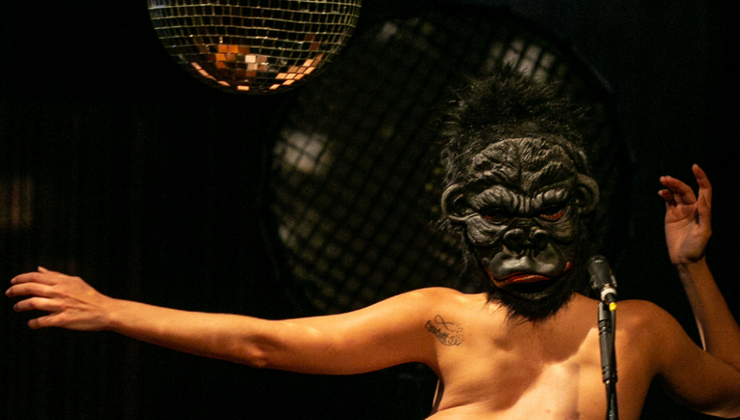
You recently received one of Brazil’s most prestigious theatre awards – the Shell Prize – for best directing for «Monga». Congratulations! What does this award mean to you? And do you think such recognition can help give non-normative bodies more visibility on theatre stages?
Yes, absolutely. I believe that «Monga» goes far beyond the five traditional senses. We don’t just see and hear. We see with our hands. We feel, we smell. We sense through the whole body. «Monga» is all about those other perspectives: different ways of being present in the world. Other ways of inhabiting the world with all parts of our beings, of our bodies. The piece invites the audience to imagine how they too might move, exist, or relate differently. But above all, it’s about imagining different futures – futures with less violence, less erasure. I’m not talking only about brutal violence, but about silent violence – the kind that is subtle, and systematically hidden.
In «Monga», I chose to be present and to present myself in a certain way – in the way I choose. That autonomy, that authorship, tells a lot about my body. This body, which for so long has been seen only as dependent on someone or something, a burden. Taking that autonomy, taking that space, taking the stage and the authorship, in the most raw, most singular way possible – yes, it’s surprising, I guess. Because it’s still rare. We are not used to it. But I hope it won’t be rare for much longer, and that «Monga» will inspire others to be present, to take to the stage, and to dare to project a better future.
With «Monga», you address one of the most fundamental questions of theatre: Who looks at whom – and how? As a performer, you expose yourself to the audience’s gaze, while simultaneously challenging them to confront their viewing habits and prejudices. What is it like for you to appear naked – and therefore vulnerable – on stage?
I don’t think of myself as vulnerable on stage. My nudity, for example – it isn’t vulnerability for me. My body is everything to me. It really is: my greatest toy, my deepest joy, my most serious field of research. And yes, it’s also become, whether I want it to or not, a kind of weapon. A form of resistance. Because there was a time – and in many ways, there still is – when a war was declared on bodies like mine. So standing there, naked, without weapons, just with my body… that has its own force. A force that is soft, but undeniable.
I’ve been working with nudity in performance for over ten years. And I’ve seen, in theatre, in the audience’s gaze, how things dissolve. At first, they stare. They stare at every part of my body. But after five, ten minutes, I can feel something change in their faces. Suddenly, the people seem more afraid of the sparkle in my eyes than of my body. They start avoiding my gaze. That’s when I feel the shift. They’re unsettled. At that point, nudity becomes just another way of being present. For me, it’s powerful. And deeply pleasurable.
What potential do you see in the physical co-presence of performers and audiences in a theatre space?
To enter the stage naked is one of my strongest statements. It’s about flesh and bone – nothing more. And it’s also about language. What that flesh and bone can create: artistic languages, narratives, political and social discourse. I get my inspiration from mythology, philosophy, psychoanalysis – but also from life. And I try to dismantle certainties. There is no single story. There are many stories. Many ways of seeing things. Nudity already challenges every norm. It undermines habits. It dismantles the idea of certainty. And that, to me, is deeply joyful. A deep pleasure.
I do theatre because, throughout my life, I’ve noticed something: when people watch me – or watch my work – they tend to treat me better afterwards. It’s as if I create a micro-bubble where there is less violence. A space where I can live with a bit more dignity. And yes, I’m speaking in the first person. But I know it’s also a we. It’s about all of us. About bodies like mine, like Julia’s. We build these bubbles – of care, of life, of resistance.
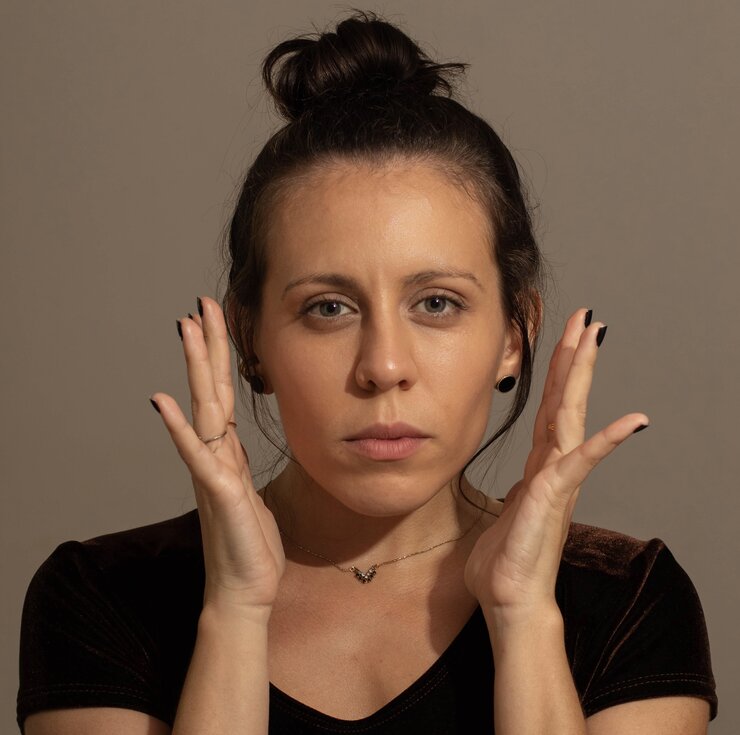
The piece begins with the question: «Can you imagine yourself at 100 years old?». Why do you ask this question, and what role does it play in the piece?
Because the world we live in today – with its wars, diseases, and extremist politics – has robbed us of our ability to imagine the future. Many people can’t even picture themselves at forty. That’s cruel. Because imagination might be the only thing we have that’s truly limitless. I don’t even believe in «infinity», but if anything comes close, it’s imagination. And yet, people have lost that. I lost it early, too. I’m only just beginning to reclaim it. To imagine yourself older – five years from now, fifty years – that too is a right.
I have a friend, Thutto. He has a rare condition and a disability. He’s 35 now. Maybe one of the oldest living people with his condition. A few years ago, I asked him: «Thutto, can you imagine yourself at 100?» People hesitate when I ask that question. It creates a kind of mental glitch. But Thutto responded differently. His reaction made me realise something important: The real fear isn’t imagining yourself at 100. The real fear is the second question I ask later on: «What if you don’t die before then?» When I ask people, «Where will you be at 100?», they often say, «I’ll be in the forest» or «on a beach with my family». Dreamy answers. That’s beautiful. But we also know, deep down, what the reality might be. I think at 100, I’ll have a tracheostomy, carrying an oxygen bag – because of many reasons. So I asked Thutto: «Do you think people are afraid of imagining themselves old, even dependent on others to eat or bathe?» And he said: «Absolutely.»
No one wants to imagine being disabled. But the truth is: the future is disabled. We will age. The world keeps turning. Thutto said something I’ll never forget: «The real fear isn’t imagining yourself at 100. The fear is imagining that you might actually survive until 100.» That question – «Where will you be?» – forces people to imagine. And yes, many imagine a beautiful scene. But behind that is an immense fear. The fear of losing autonomy. The fear of becoming dependent. And this fear is violent – both towards oneself and towards people like us. Because it creates a cycle – one of silencing, rejection, and cruelty. That’s why I believe it’s important to imagine ourselves at 100 – with quality of life. Not with denial. Because denial is what we see in the far-right, in anti-vaxxers, in those who refuse to care for others or themselves. We, on the other hand, need to assert ourselves – and to dream. And if they take that away from us – our ability to dream – I think they take everything.
«Monga» is much more than a conventional, frontal theatre performance. I found it to be inspiring, joyful, and a celebration of all bodies coming together in a shared space, despite the heavy subject matter. How would you describe the piece yourself, and what can the Zurich audience look forward to?
«Monga» is made of our bodies gathered in the theatre space, of presence. It’s a story that isn’t in the history books. A way of looking at the world that expands beyond the five senses. The audience can expect to be offered different perspectives. Unusual ways of envisioning more dignified forms of coexistence. That’s what «Monga» is about. It is rooted in a brutal history – Julia Pastrana’s life. But the work doesn’t aim to repeat that violence. Quite the opposite. It’s about breaking the cycle.
I understand the piece as a festive gathering, a form of communion. Like those we find at family dinners, or in churches, or in communities that gather to celebrate something. «Monga» is a communion of coexistence. A space where we remember: no one does anything alone. And that’s something I’ve taken to heart in my solo work. I might be alone on stage, but nothing I do, I do alone. I travel with a team of seven or eight people. You see just me under the lights – but that moment exists only because dozens of people are working together behind the scenes, as it always is in theatre.
So when people ask what they can expect from «Monga», I say this: Expect the dismantling of certainty. Because what pulses in me is exactly that – uncertainty. The possibility of imagining a future that might be unclear, but still possible. And to do this in a shared space, with all these unique bodies.
Thank you so much for your time and for sharing this inspiring insight into your work. We are very much looking forward to welcoming you to Zurich in August.
Thank you, Lea.
Credits
Interview: Lea Loeb
The conversation took place in English, Portuguese and Spanish.
German translation: Franziska Henner
Portrait photos: Yasmin Gomes, Vera Carvalho
Photos from «Monga»: Patricia Almeida, Camila Rios